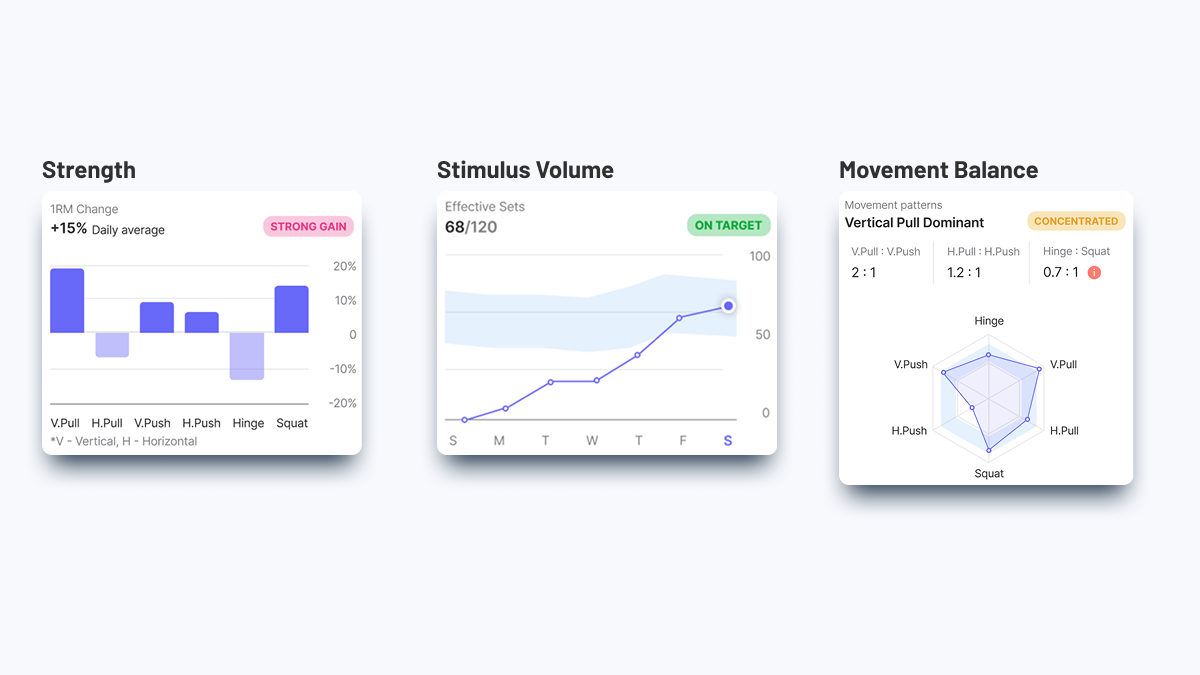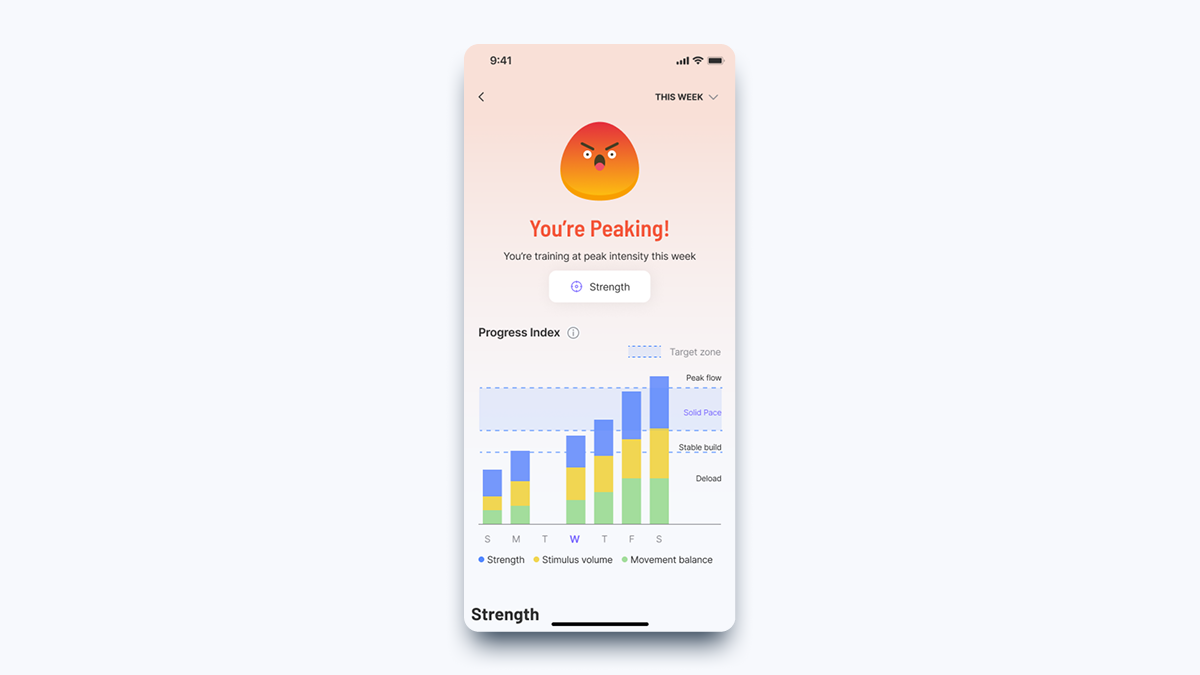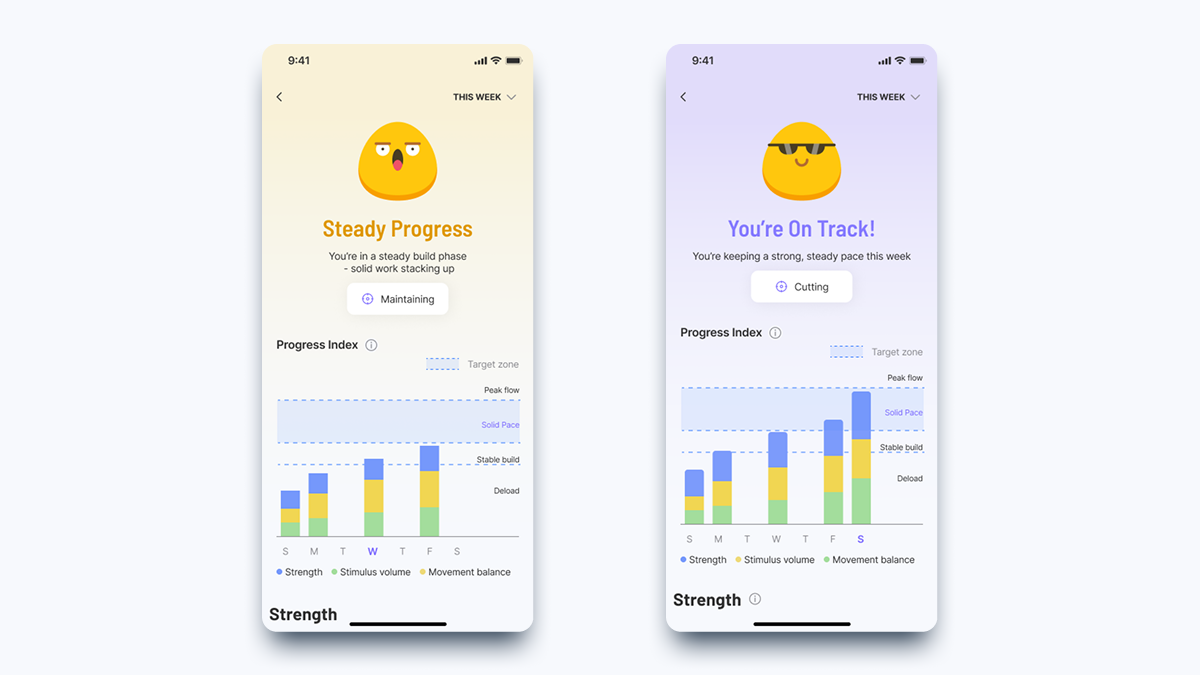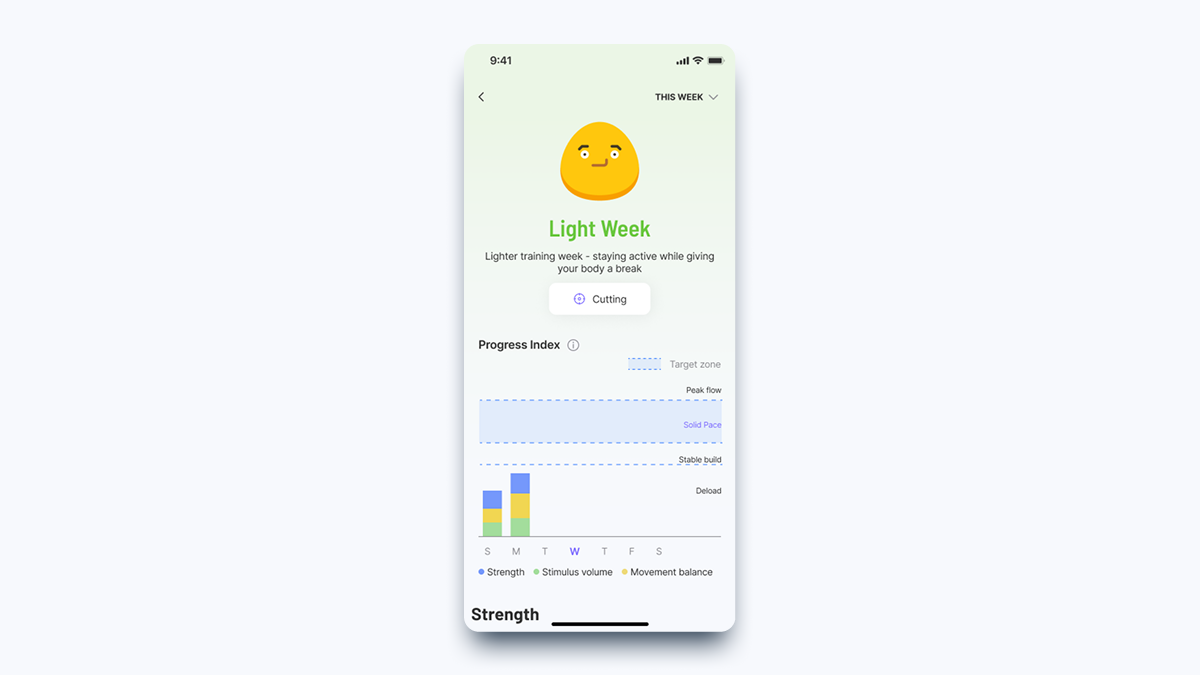How Jefit’s NSPI Measures Your Weekly Training Adaptation
Your Window Into How Progress Really Works

The North Star Progress Index (NSPI) is the intelligence layer inside Jefit’s new Progressive Overload (PO) System— the part that helps you see how your body is adapting and performing over time.
While the PO system drives how your workouts evolve, the NSPI explains why — translating your logged sets, reps, and performance into clear, personalized insights.
It’s not a generic tracker. It’s a system built to understand you — your goal, your experience level, and your training phase — and adapt around them.
Table of contents
What the NSPI Measures
Understanding the NSPI Dashboard
How to Read the NSPI
– Above Range
– Within Range
– Below Range
Built for Your Goals, Not Someone Else’s
Why This Matters
What’s Next
Read More
Strength Engine →
Stimulus Volume Engine →
Movement Balance Engine →
In Short
What the NSPI Measures

Your NSPI dashboard summarizes progress across three key dimensions:
- Strength – how your performance is trending across major movement patterns and whether you’re improving at the right pace.
- Stimulus Volume – how much total productive work (sets × reps × load) you’re accumulating each week.
- Movement Balance – how evenly your program develops key movement patterns like push/pull, hinge/squat, and core stability.
Together, these metrics form your NSPI score — a unified, high-level reflection of how efficiently you’re training toward your personal goal.
Understanding the NSPI Dashboard
Your NSPI dashboard provides a live snapshot of how your current week’s training is pacing relative to your plan.
Each metric updates dynamically as you log workouts — reflecting your week-to-date trend for Strength, Stimulus Volume, and Movement Balance.
The goal isn’t to chase a perfect score — it’s to stay aligned with your intended pace of progress.
As Jefit evolves, this same dashboard will expand into a multi-week view, showing how your progress trends across entire mesocycles (4–6 week training phases).
For now, the weekly NSPI gives you immediate, real-time feedback on how your training inputs and recovery are interacting this week.
How to Read the NSPI
Each NSPI component has its own adaptive target range — based on your goal, experience level, and current phase.
If your metrics stay within that range, you’re progressing exactly as planned.
Here’s what each direction means:
🔺 Above Range: Adapting Quickly, High System Load

You’re progressing faster than planned, often from strong recovery or high-intensity sessions.
That’s positive, but it also means your body is carrying significant load.
Stay mindful of recovery — too many “above range” weeks can accumulate fatigue.
⚖️ Within Range — Ideal, Planned Pace

This is where you want to be most of the time.
Your Strength, Volume, and Movement Balance metrics are in sync with your current plan.
Progress is steady, recovery is matching demand, and you’re building sustainable improvement week by week.
🔻 Below Range — Inputs Not Fully Aligned Yet

Being below range isn’t failure — it’s feedback.
It means one or more areas (Strength, Volume, or Balance) might need attention: perhaps fewer total sets, stalled lifts, or less pattern variety.
The system will guide you back into your optimal zone automatically.
💡 Tip: The NSPI is a compass, not a scoreboard.
Use it to understand why your training feels the way it does — and let Jefit guide you toward the right pace for your goal.
Built for Your Goals, Not Someone Else’s
Every NSPI metric — from target ranges to adaptive thresholds — is generated around your goal and experience level.
A beginner building general strength has a very different target range than an advanced user training for hypertrophy or power.
The PO system and NSPI work together to personalize every feedback loop to your training intent — so you’re never forced into a one-size-fits-all template.
Your program, your signals, your pace.
That’s what makes Jefit’s system truly adaptive, not prescriptive.
Most lifters only track what happened — sets, reps, and weights.
The NSPI helps you understand what it means.
Why This Matters
It connects short-term performance with your broader progress curve.
When Strength, Stimulus Volume, and Movement Balance all move together within their planned range, it means your training and recovery are aligned.
It’s not about doing more — it’s about doing what’s right, for your current goal and readiness.
The NSPI is built on Jefit’s 15-year dataset — one of the world’s largest collections of real strength-training behavior.
Millions of logged sessions revealed how genuine progress unfolds across different goals, experience levels, and fatigue profiles.
Every workout you record makes the system smarter.
You don’t have to calculate or tweak anything — simply train consistently, and Jefit will interpret your data in real time to keep you on track.
What’s Next
Today, the NSPI actively powers your three performance engines:
- Strength → monitors your real lifting performance across six core movement patterns.
- Stimulus Volume → tracks your overall workload and recovery rhythm.
- Movement Balance → maintains structural and performance symmetry across the body.
Next, NSPI will expand into mesocycle-level tracking and adaptation, giving you a long-term view of how your progress trends from week to week — and adjusting your training automatically based on those trends.
No guesswork. No generic plans.
Just training that evolves with you.
Read More
Explore each NSPI dimension in detail:
In Short
The North Star Progress Index is your personalized progress dashboard — a living feedback system that adapts to your goals, your experience, and your training journey.
Stay within your range, train with intent, and let Jefit handle the science behind the scenes.
Because progress isn’t about chasing numbers — it’s about training smarter, for you.
- The Science Behind Jefit’s Load Progression Engine - November 20, 2025
- The Stimulus Volume Engine - November 19, 2025
- The Movement Balance Engine - November 19, 2025